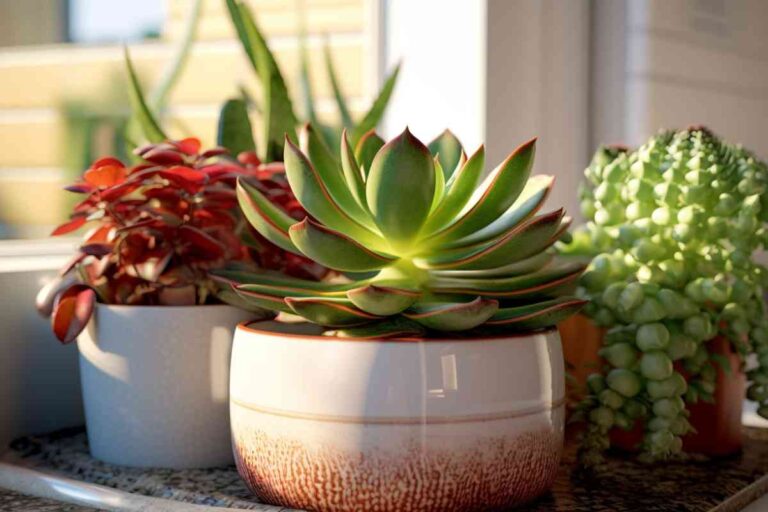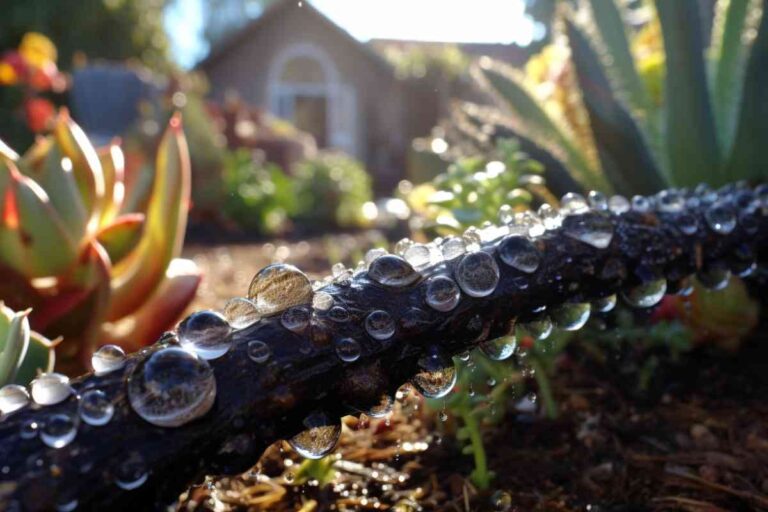Heptacodium Miconioides: A Rare and Beautiful Ornamental Plant
Heptacodium Miconioides Overview
Heptacodium miconioides, also known as the seven-son flower, is a unique and ornamental deciduous shrub or small tree that belongs to the Caprifoliaceae family, also known as the honeysuckle family. It is a specimen plant that is highly valued by gardeners and landscapers due to its striking appearance and ability to attract pollinators.
The genus Heptacodium consists of only one species, Heptacodium miconioides, which was first discovered by the botanist E. H. Wilson in China’s Hubei Province in 1907. It was later named by Alfred Rehder in 1916. The Chinese name for Heptacodium miconioides is “qi zi hua,” which translates to “seven-son flower.”
Heptacodium miconioides is native to China but has become increasingly popular in North America, particularly in the United States. It is commonly found in nurseries and is highly sought after by collectors due to its rarity.
This unique plant can grow up to 20 feet tall and has a spread of up to 15 feet. It is a fast-growing plant that is easy to cultivate and maintain. Heptacodium miconioides is a deciduous shrub that produces clusters of fragrant white flowers in late summer or early fall. The flowers are followed by small, red fruit that attract birds.
In addition to its striking appearance, Heptacodium miconioides is a hardy plant that is resistant to pests and diseases. It is also adaptable to a wide range of growing conditions and can thrive in both full sun and partial shade.
Overall, Heptacodium miconioides is a unique and ornamental shrub that is highly valued by gardeners and landscapers. Its striking appearance, hardiness, and adaptability make it a popular choice for a wide range of landscaping and gardening projects.
Physical Characteristics
Heptacodium miconioides is a deciduous shrub or small tree that can grow up to 20 feet tall. Its bark is thin and smooth, with a grayish-brown color that exfoliates in strips to reveal a lighter color underneath. The branches are slender, rounded, and upright, forming a dense, spreading crown. The trunk is usually short and divides into several branches close to the ground.
The leaves of Heptacodium miconioides are opposite, simple, and ovate in shape, with a dark green color that turns yellow in the fall. The foliage is arranged in a whorled pattern along the branches, with six to eight leaves per whorl. The leaves are about 3 to 6 inches long and 2 to 4 inches wide, with a pointed tip and a serrated margin.
Heptacodium miconioides produces small, fragrant, white flowers that bloom in late summer or early fall. The flowers are arranged in clusters at the end of the branches, with each cluster containing seven flowers, hence the name “Heptacodium” which means “seven bells”. The flowers are followed by small, red, berry-like fruits that persist into the winter.
Overall, Heptacodium miconioides has a graceful and delicate appearance, with slender branches and dark green foliage that provide a nice contrast to the peeling bark. Its physical characteristics make it an attractive ornamental plant that can be used in a variety of landscape settings.
Flowering and Fruiting
Heptacodium miconioides, commonly known as the seven-son flower, is a deciduous shrub or small tree that blooms in late summer and early fall. The flowers of this species are creamy-white in color and grow in clusters. The inflorescence is made up of many small flowers, each with five petals and sepals. The buds of the flowers are pink and open to reveal the white or creamy-white flowers.
The flowering of Heptacodium miconioides usually begins in late summer, around August, and continues until October. The flowers are fragrant and attract pollinators such as bees and butterflies. After the flowers have fallen, the pink calyces are revealed, which eventually turn into purplish-red fruits. The fruit of Heptacodium miconioides is a small, cherry red berry-like drupe that is about 1 cm in diameter.
The fruits of Heptacodium miconioides are not edible, but they do add ornamental value to the plant. The fruiting phase of this species usually occurs in late fall, around October or November. The fruits are attractive to birds, which eat them and help to disperse the seeds.
In summary, Heptacodium miconioides is a beautiful and fragrant species that blooms in late summer and early fall. Its creamy-white flowers grow in clusters and are followed by purplish-red fruits. The flowers and fruits of this species add ornamental value to the plant and attract pollinators and birds.
Propagation and Maintenance
If you’re interested in propagating Heptacodium miconioides, you can use both softwood and semi-hardwood cuttings. Studies have shown that middle and terminal cuttings produced better results than basal cuttings, with treated cuttings having a greater rootball diameter than untreated ones. However, keep in mind that propagation through cuttings can be a bit challenging, and success rates can vary.
Alternatively, you can try growing Heptacodium miconioides from seed. While the plant produces viable seeds, it’s important to note that germination can be slow and uneven. To improve your chances of success, you can try stratifying the seeds for a few months before planting them.
Once your Heptacodium miconioides is established, it’s relatively low-maintenance. The plant is hardy and can tolerate a wide range of soils, as long as they’re well-draining. While the plant prefers full sun, it can also grow in partial shade. Pruning is generally not necessary, but you can trim the plant to maintain its shape or remove any dead or damaged branches.
Overall, Heptacodium miconioides is a beautiful and hardy plant that can be propagated through cuttings or seeds. With a little bit of care and maintenance, your plant can thrive in a variety of conditions.
Ecological Significance
Heptacodium miconioides is a wild plant species that is known for its ecological significance. The plant is native to China and is known to attract butterflies and hummingbirds, making it an important source of nectar for pollinators. The plant’s flowers produce a sweet nectar that is rich in sugar, making it a valuable food source for these animals.
In addition to attracting pollinators, Heptacodium miconioides plays an important role in the ecosystem as a whole. The plant is a part of the natural food chain, providing food for insects, birds, and other animals. The plant’s leaves and stems are also used by some animals as a shelter and nesting site.
Unfortunately, Heptacodium miconioides is currently facing the threat of extinction due to habitat fragmentation and loss. As a result, it is important to protect the plant’s natural habitat and promote its conservation.
Overall, Heptacodium miconioides is an ecologically significant plant species that plays an important role in the ecosystem. By attracting pollinators and providing food and shelter for animals, the plant is an important part of the natural food chain. However, its current status as an endangered species highlights the need for conservation efforts to protect its natural habitat and ensure its survival for future generations.
Uses
Heptacodium miconioides is a versatile plant that has a variety of uses in landscaping. Its showy flowers and attractive bark make it a popular choice for gardeners looking to add winter interest to their yard.
One common use of heptacodium miconioides is as a shrub border. The plant’s dense foliage and attractive flowers make it an excellent choice for creating a natural-looking border around a garden or yard. It can also be used as a single-trunk tree, with its attractive bark and unique shape making it a standout feature in any landscape.
In addition to its ornamental uses, heptacodium miconioides has some practical applications as well. The plant’s leaves and bark have been used in traditional Chinese medicine to treat a variety of ailments, including headaches, fever, and inflammation.
Overall, heptacodium miconioides is a versatile and attractive plant that can be used in a variety of ways to enhance the beauty and functionality of your yard or garden. Whether you’re looking to create a showy border, add winter interest, or incorporate traditional medicine into your landscaping, heptacodium miconioides is a great choice.
Frequently Asked Questions
Where can I buy Heptacodium miconioides?
Heptacodium miconioides, also known as Seven-Son Flower, can be purchased from many nurseries and garden centers. You can also find Heptacodium miconioides for sale online from various retailers. Be sure to choose a reputable seller and ensure that the plant is healthy and disease-free.
What are some popular cultivars of Heptacodium?
Some popular cultivars of Heptacodium miconioides include ‘Temple of Bloom’, ‘Miconioides’, and ‘Ruby’. These cultivars offer unique features such as larger flowers, deeper color, and increased hardiness.
What are some good companion plants for Heptacodium?
Heptacodium miconioides pairs well with a variety of plants, including hydrangeas, hostas, ferns, and astilbes. These plants offer contrasting textures and colors that complement the Seven-Son Flower’s late-season blooms.
Is Heptacodium miconioides toxic to dogs?
According to the ASPCA, Heptacodium miconioides is not toxic to dogs. However, it is always a good idea to monitor your pets around plants and contact your veterinarian if you suspect your pet has ingested any plant material.
In what USDA hardiness zones does Heptacodium miconioides grow?
Heptacodium miconioides is hardy in USDA hardiness zones 5 through 9. It prefers full sun to partial shade and well-draining soil.
How large can Heptacodium miconioides plants get?
Heptacodium miconioides can grow up to 20 feet tall and wide, but it can be easily pruned to maintain a smaller size. It is a fast-growing plant, so regular pruning may be necessary to keep it in check.
Heptacodium miconioides, also known as Seven-Son Flower, can be purchased from many nurseries and garden centers. You can also find Heptacodium miconioides for sale online from various retailers. Be sure to choose a reputable seller and ensure that the plant is healthy and disease-free.
“}},{“@type”:”Question”,”name”:”What are some popular cultivars of Heptacodium?”,”acceptedAnswer”:{“@type”:”Answer”,”text”:”
Some popular cultivars of Heptacodium miconioides include ‘Temple of Bloom’, ‘Miconioides’, and ‘Ruby’. These cultivars offer unique features such as larger flowers, deeper color, and increased hardiness.
“}},{“@type”:”Question”,”name”:”What are some good companion plants for Heptacodium?”,”acceptedAnswer”:{“@type”:”Answer”,”text”:”
Heptacodium miconioides pairs well with a variety of plants, including hydrangeas, hostas, ferns, and astilbes. These plants offer contrasting textures and colors that complement the Seven-Son Flower’s late-season blooms.
“}},{“@type”:”Question”,”name”:”Is Heptacodium miconioides toxic to dogs?”,”acceptedAnswer”:{“@type”:”Answer”,”text”:”
According to the ASPCA, Heptacodium miconioides is not toxic to dogs. However, it is always a good idea to monitor your pets around plants and contact your veterinarian if you suspect your pet has ingested any plant material.
“}},{“@type”:”Question”,”name”:”In what USDA hardiness zones does Heptacodium miconioides grow?”,”acceptedAnswer”:{“@type”:”Answer”,”text”:”
Heptacodium miconioides is hardy in USDA hardiness zones 5 through 9. It prefers full sun to partial shade and well-draining soil.
“}},{“@type”:”Question”,”name”:”How large can Heptacodium miconioides plants get?”,”acceptedAnswer”:{“@type”:”Answer”,”text”:”
Heptacodium miconioides can grow up to 20 feet tall and wide, but it can be easily pruned to maintain a smaller size. It is a fast-growing plant, so regular pruning may be necessary to keep it in check.
“}}]}



